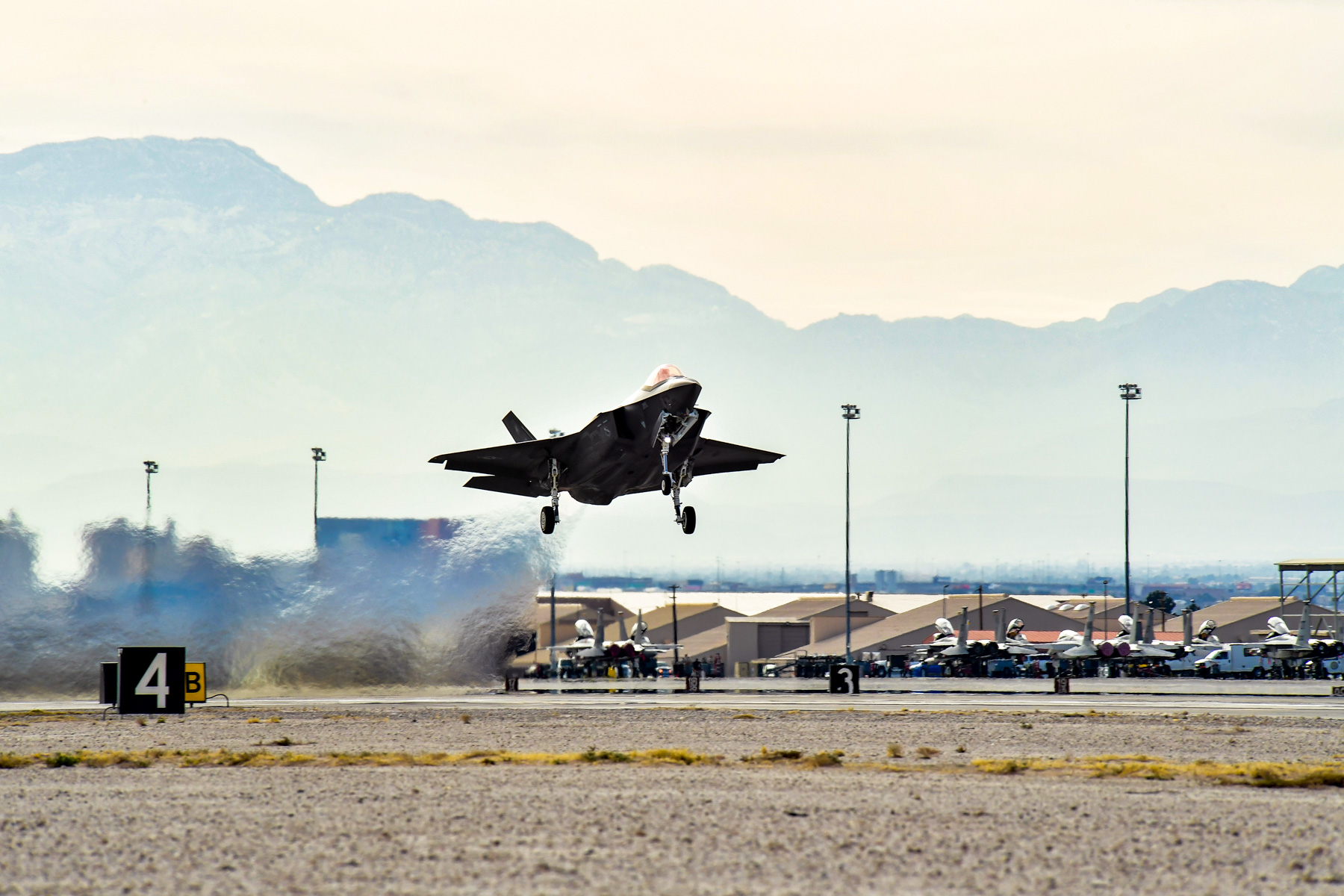An F-35A Lightning II fighter aircraft from Hill AFB, Utah, takes off from Nellis AFB, Nev., Feb. 2, 2017, during Red Flag 17-01. This is the first F-35A deployment to Red Flag since the Air Force declared the jet combat ready in August 2016. Air Force photo by R. Nial Bradshaw.
The F-35A strike fighter made an impressive showing at its first Red Flag exercise since the jet was declared combat ready last year, setting the stage for future large-scale exercises and coming deployments.
The 13 fighters from the 388th Fighter Wing and Reserve 419th Fighter Wing from Hill AFB, Utah, participated in Red Flag 17-1 at Nellis AFB, Nev., from Jan. 23-Feb. 10. The jets flew alongside F-22s, B-1Bs, F-15s, F-16s, as well as international jets such as Eurofighters.
The F-35s also flew against red teams, conducting suppression of enemy air defenses and targeting of surface-to-air missile systems missions. This included scenarios where allied “blue” aircraft encountered more than 20 enemy, or “red,” fighters made up of aggressor F-16s and private contractor jets.
The biggest takeaway for F-35 pilots was an increase in situational awareness, said Lt. Col. George Watkins, commander of the 34th Fighter Squadron. Young pilots in debriefings immediately “talked about how much situational awareness they had” in a threat environment, including a “god’s eye view” of the battlespace.
Using data links and sensor fusion, the F-35s were able to quarterback legacy aircraft such as F-16s in large-scale missions. The jet’s enhanced radar, and ability to communicate with legacy aircraft via the Link 16 system, proved valuable during the exercise.
“Situational awareness is king,” said Col. David Lyons, commander of the 388th Fighter Wing. “Everybody’s SA is improved when the F-35 is on the battlefield.”
This, coupled with the low observable technology, “makes us exponentially more survivable,” Watkins said.
While the overall goal of a Red Flag exercise is to practice how aircraft can operate with other aircraft in the same battlespace, the F-35 did score a kill-death ratio better than 15 to 1. F-35s, throughout the exercise, dropped 27 inert weapons with 25 of them scoring direct hits.
Throughout the two week exercise, F-35s flew at a mission capable rate of more than 90 percent and no specific maintenance issue arose, said 1st Lt. Devin Ferguson, with the 388th Aircraft Maintenance Squadron. The F-35s were flying hard, and things are going to break, but maintainers were able to fix issues quickly. For example, maintainers saw a generator on one jet fail. Airmen were able to fix it and the jet was flying again within 24 hours, Ferguson said.
“The kind of rates [that] were turned in are enviable for any fleet,” Lyons said, explaining the high capability of the F-35 is comparable or better than other squadrons across the service.
